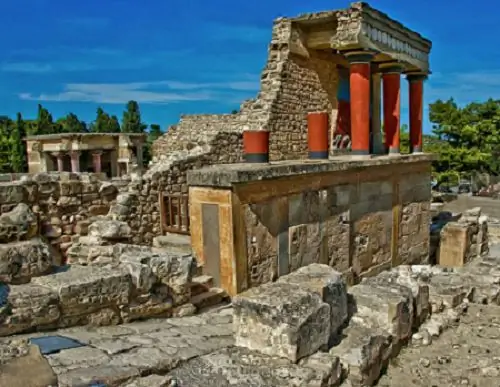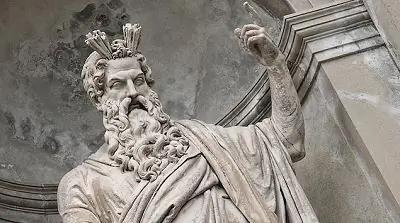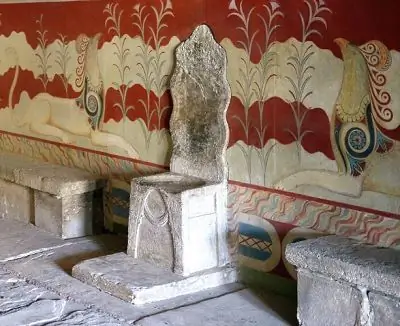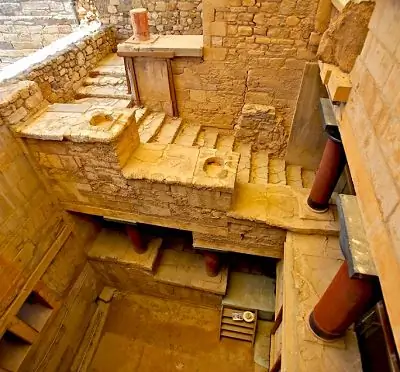If you decide to touch the history of the ancient civilization of the Minoans and plunge headlong into the past, rewinding it three and a half thousand years ago, then you are on the right track. The palace of Knossos, completely shrouded in secrets and legends, will allow you to slightly open the veil of secrets buried under the millennial dust. The journey begins.

A bit of history
The Palace of Knossos was once a stronghold of Crete.
In those days, the powerful Minoan civilization was at its peak - a nation of fearless seafarers who controlled trade deals in the Mediterranean.
Horrible legends were told about the infamous Cretan king Minos.

According to Greek mythology, he built a labyrinth here to contain the monstrous creature-half-man-half-bull-Minotaur.
The Minotaur was the fruit of the sinful love of the bull and the king's unfaithful wife. And to hide his shame from the public, the king imprisoned him in a labyrinth. According to legend, the Minotaur ate human blood. And the lord of the seas, Minos, ordered his servants to bring seven young men and women from their wanderings in order to give them to the monster to be devoured alive.
The ruins of the palace can be seen on the island today. Built around 2 millennia BC, the palace consisted of hundreds of luxurious rooms. But natural disasters did not spare him. And first an earthquake, and then a fire in 1450 BC finally destroyed it. Could this building be the abode of the most creepy ancient creatures? Or is it just a legend? This question was asked in 1900 by the archaeologist Sir Arthur Evans, who was engaged in the excavation of the structure. Evans soon discovered a stone seat.

Could it be the throne of the legendary Minos? Quite possible. In the course of the excavations, a magnificent palace began to appear. Occupying an area of 20 thousand square meters, it was the result of the amazing technological progress of people living in the Bronze Age. Evans managed to recreate only a small part of the palace - a grain of a fragment of a vanished culture. A four-storey terrace, a wide front staircase, symmetrically crowned with columns, well-thought out courtyards, lighting, 1500 intertwining rooms, an underground drainage system - all this spoke of the architectural genius of the ancient people.

Apparently, Knossos was indeed the center of a highly developed civilization. The two-sided images of an ax on a stone discovered by Evans (the old name of the ax is "labrys" - a labyrinth) suggested that the project of the Knossos Palace was inspired by the legend of a chilling labyrinth and was built as a living embodiment of it. Modern scientists are in solidarity with him and argue that the legend of the Minotaur personified the greatness of the Minoan civilization. And the image of the minotaur is collecting. He personified the Minoans. Like the Minotaur, which fed on living people, the Minoans ruthlessly levied tribute from neighboring dependent states such as Athens, for example. But if this is just a legend, then who then sat on the throne found in the palace? This question remains open.
Tours
When going on a trip to Crete, you can visit the most famous attraction - the Palace of Knossos. The tour costs 15 euros. Summer timetable of ticket offices is from 8.00-19.00 from June to October. From November to May, you can visit the palace grounds during the daytime - from 8.00 to 15.00. In Russian, excursion support is rare, so it is better to coordinate this moment with your tour operator in advance.
The exact address
The Palace of Knossos is located on Kefal Hill, in the northern part of Crete. The official address of the palace is Leof. Knosou, Iraklio 714 09.






